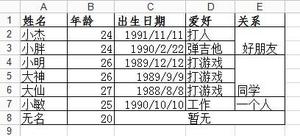Python使用type动态创建类操作示例
本文实例讲述了Python使用type动态创建类操作。分享给大家供大家参考,具体如下:
使用type动态创建类
动态语言和静态语言最大的不同,就是函数和类的定义,不是编译时定义的,而是运行时动态创建的。
下面看一个例子:
# 定义一个Person类
class Person(object):
def __init__(self):
pass
def say(self):
print('say hello')
p = Person()
p.say() # 输出 say hello
print(type(p)) # 输出 <class '__main__.Person'>
print(type(Person)) # 输出 <class 'type'>
运行结果:
say hello
<class '__main__.Person'>
<class 'type'>
我们发现,type(Person)输出的是<class 'type'>是type类型。
type()函数可以查看一个类型或变量的类型,Person是一个class(类),它的类型是type,而p是一个 Person的实例,它的类型是Person类。
我们说class(类)的定义是运行时动态创建的,而创建class(类)的方法就是使用type()函数。
eg:
# 定义一个方法
def func(self, word='hello'):
print('say %s' % word)
Person = type('Person', (object,), dict(say=func)) # 通过type创建Person类
p = Person()
p.say() # 输出 say hello
print(type(p)) # 输出 <class '__main__.Person'>
print(type(Person)) # 输出 <class 'type'>
运行结果:
say hello
<class '__main__.Person'>
<class 'type'>
type函数动态创建类,需要传入3个参数,分别是:
- 第一个参数:class的名称
- 第二个参数:继承的父类集合,注意Python支持多重继承,如果只有一个父类,别忘了tuple的单元素写法(tuple单元素写法(obj,));
- 第三个参数:class的方法名称与函数绑定,这里我们把函数func绑定到方法名say上。
通过type()函数创建的类和直接写class是完全一样的,因为Python解释器遇到class定义时,仅仅是扫描一下class定义的语法,然后调用type()函数创建出class。
更多关于Python相关内容感兴趣的读者可查看本站专题:《Python面向对象程序设计入门与进阶教程》、《Python数据结构与算法教程》、《Python函数使用技巧总结》、《Python字符串操作技巧汇总》、《Python编码操作技巧总结》及《Python入门与进阶经典教程》
希望本文所述对大家Python程序设计有所帮助。
以上是 Python使用type动态创建类操作示例 的全部内容, 来源链接: utcz.com/z/349371.html






